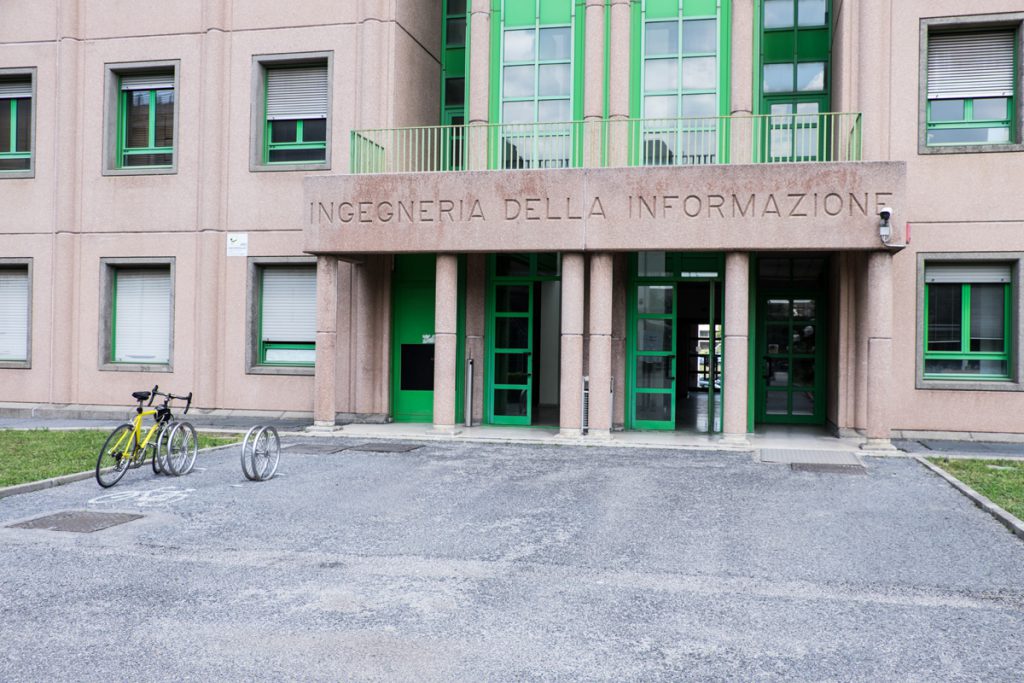dal sito web del corso di laurea in Ingegneria di Internet

Il Dipartimento di Ingegneria Elettronica in collaborazione con Essenthia, Opentech, Net Reply, mette a disposizione 30 premi di merito per i migliori studenti e le migliori studentesse da 1000€ lordi ciascuno.
Gli studenti che intendono partecipare alla selezione per i premi di merito devono presentare domanda di partecipazione entro il 26 febbraio 2021 con le seguenti modalità:
1) Scaricare e compilare uno dei seguenti file:
candidatura-premi-merito-2020-v04.xlsx (italian version)
application-to-merit-prizes-2020-v04.xlsx (english version)
2) Allegare il file compilato in un messaggio di posta elettronica all’indirizzo premi-merito@internet.uniroma2.it, indicando nell’oggetto del messaggio il vostro nome e cognome. Non è necessario scrivere nulla nel corpo del messaggio.
3) Entro il giorno lavorativo successivo all’invio, riceverete un messaggio di conferma della ricezione.
Verranno premiati fino a SEI studenti per ciascuno dei seguenti anni accademici di prima immatricolazione (in totale fino a TRENTA premi di merito):
Corso di Laurea in Ingegneria di Internet
● 6 studenti iscritti al 1° anno nel 2019/20 (anno immatricolazione 2019/2020);
● 6 studenti iscritti al 2° anno nel 2019/20 (anno immatricolazione 2018/2019);
● 6 studenti iscritto al 3° anno nel 2019/20 (anno immatricolazione 2017/2018).
Corso di Laurea Magistrale in ICT and Internet Engineering
● 6 studenti iscritti al 1° anno nel 2019/20 (anno immatricolazione 2019/2020);
● 6 studenti iscritti al 2° anno nel 2019/20 (anno immatricolazione 2018/2019).
Consultate il BANDO per tutte le informazioni più dettagliate, pubblicato sul sito web del Corso di Studi.
Prerequisiti
Per partecipare alla selezione uno studente deve essere regolarmente iscritto e in regola con le tasse universitarie, avere una media (pesata con il numero di crediti) superiore a 25.700 e aver conseguito almeno:
● 27 CFU se ha completato il primo anno della Laurea (immatricolato nel 2019/20)
● 63 CFU se ha completato il secondo anno della Laurea (immatricolato nel 2018/19)
● 99 CFU se ha completato il terzo anno della Laurea (immatricolato nel 2017/18)
● 27 CFU se ha completato il primo anno della Laurea Magistrale (immatricolato nel 2019/20)
● 63 CFU se ha completato il secondo anno della Laurea Magistrale (immatricolato nel 2018/19)
Se gli esami non sono stati registrati su Delphi, indicarlo nella domanda. In caso di selezione per il premio, verrà richiesta una dichiarazione del Docente che attesti il completamento dell’esame e la relativa valutazione.
Modalità di attribuzione
La Commissione di aggiudicazione dei premi è nominata dal Consiglio di Dipartimento e composta da tre membri compreso il presidente.
Scaduti i termini di presentazione delle domande, la Commissione di aggiudicazione redigerà le graduatorie, una per ogni anno accademico di immatricolazione, rendendo poi noti i nomi e i punteggi dei vincitori.
Le graduatorie saranno pubblicate dopo il 5 marzo 2021 alla pagina del sito web del Corso di Studi http://internet.uniroma2.it/offerte-di-lavoro-e-premi-di-merito/premi-di-merito/ (versione italiana) e alla pagina http://internet.uniroma2.it/en/academic-merit-prizes/ (versione inglese).
Il punteggio di uno studente tiene conto:
● della media degli esami sostenuti
● delle lodi e
● del numero totale di crediti (CFU) conseguiti dallo studente dall’immatricolazione fino alla sessione autunnale (compresa) entro il 30 ottobre.
In particolare il punteggio P verrà calcolato nel seguente modo: P = PAVG + PCR, dove [PAVG] Media pesata dei voti degli esami (ogni esame è pesato per i relativi crediti) [PCR] Punteggio da 0 a 20 che valuta il numero di crediti conseguiti.
In particolare, sia CRMAX il massimo numero di crediti conseguiti da uno studente in graduatoria per un dato anno, sia CR è il numero di crediti dello studente, il punteggio PCR è dato da PCR = 20 * CR / CRMAX
Ogni Lode viene conteggiata come “+3 punti” sul voto di esame.
Nel caso di pari merito, per l’assegnazione del premio verrà valutata la data di nascita (viene premiato lo studente più giovane).
Per gli studenti trasferiti da altro Ateneo o corso di laurea si considera l’anno della precedente prima immatricolazione. La Commissione di aggiudicazione valuterà in modo insindacabile le modalità di inserimento in graduatoria tenendo conto delle conversioni di CFU e del riconoscimento dei voti effettuato al momento del trasferimento, in modo da non penalizzare gli studenti che si sono immatricolati in questa Università e corso di Laurea.
Nel caso in cui un numero di premi rimanga non assegnato, questi verranno banditi nuovamente nell’autunno 2021, con modalità che verranno comunicate.
RECAPITI UTILI
Oltre all’indirizzo istituzionale del Corso di Studi info@internet.uniroma2.it, si forniscono anche i seguenti recapiti:
– Coordinatore del Corso di Studi, Prof. Stefano Salsano: stefano.salsano@uniroma2.it
– Responsabile della Segreteria Didattica, Dott.ssa Rosanna Gervasio: rosanna.gervasio@uniroma2.it





